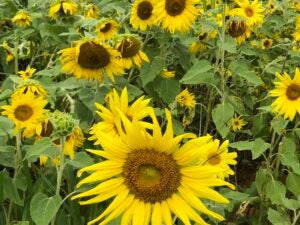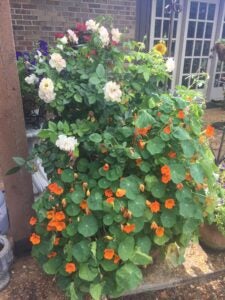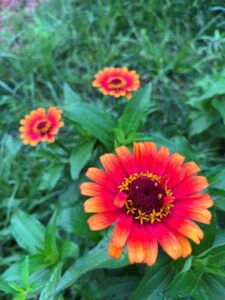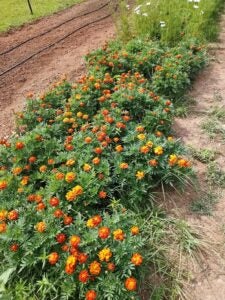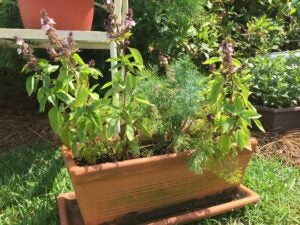Spring Guide 2024: Summer garden flowers coming into season
Published 10:42 am Tuesday, April 2, 2024
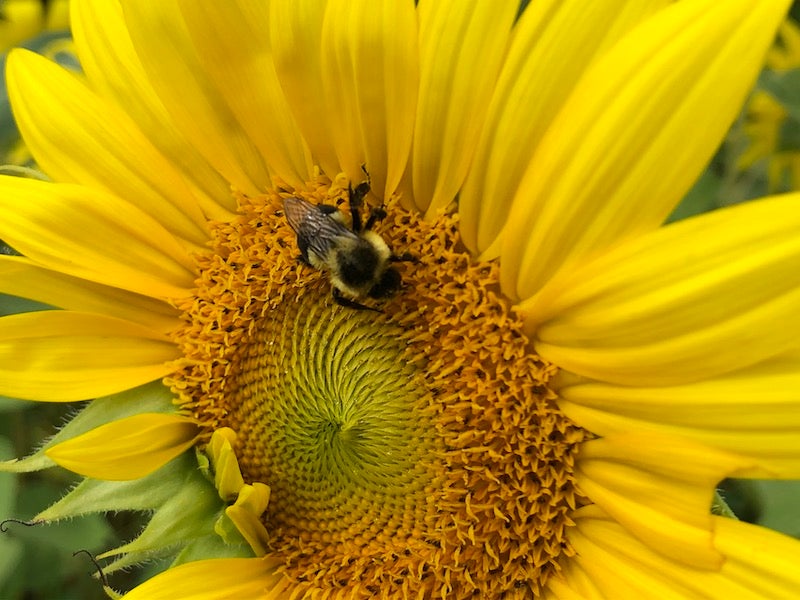
- A sunflower attracting a honeybee pollinator. (LUCY EDWARDS | CONTRIBUTED)
|
Getting your Trinity Audio player ready...
|
By Lucy Edwards | Chilton County Extension Coordinator
Spring has arrived and summer is just around the corner. The longer days and warmer temperatures signal that it will soon be time to plant the vegetable garden. Some of you may already have plants and seeds in the ground. If the plants have not taken off yet, keep waiting patiently. Our nighttime temperature and soil temperature still manage to be low. Once the soil warms up your garden will be thriving and other things will begin to emerge – Insects! Incorporating flower and herb species into a garden can deter bad bugs from feeding on crops and attracts beneficial insects to the landscape.
Sunflowers
These beauties, when planted in rows about 3 to 4 feet from your vegetables, will attract pest insects such as leaf-footed bugs, keeping them from feeding on your tomatoes, squash, and eggplant. Succession planting, allowing 2 weeks between planting, will extend the bloom time and protect your vegetables longer. In addition, you can gather a lovely bouquet for your kitchen counter or dining room table.
Nasturtiums
This low growing annual comes in both trailing and bush forms. They produce a variety of flower color ranging from orange, yellow and red when planted in full sun. Easily sown from seed, these plants can thrive in low fertility. Too much fertilization will produce lush green leaves and few blooms. Lastly, both the leaves and flowers are edible. Harvest to enjoy in salads.
Zinnias
One pack of zinnia seed can go a long way. This annual will reseed itself year after year. Make sure you select a permanent spot for them. Color selection is limitless along with flower shape and size. If you allow the flowers to go to seed, do not till in the bed the following year. Too much cultivation disturbs the seedbed. Zinnias will produce until the first frost in the fall. The number of pollinators attracted to your garden will surprise you.
Marigolds
A southern staple that brings pollinators to the garden and helps ward off nematodes. There are two common types of marigolds: American (Tagetes erecta) and French (Tagetes patula). American marigolds, also known as African marigolds, are tall – up to 3 feet – and have double flowers resembling pompoms. French marigolds are smaller with single flowers. Both are available in a variation of orange, yellow, and red blooms. These grow well from seed and transplants. Most individuals prefer the transplants for instant color.
Basil
Not your typical flowering plant. However, its dainty flowers attract pollinators and leaves provide habitat for beneficial, predatory insects. There are several types of basil providing a variety of options. Lemon basil’s fragrance alone makes it worth including in your garden. Cinnamon basil provides dark green foliage and pink flowers with a spicy aroma to the garden. Thai basil, used in Asian cuisine, has purple stems and purple flowers. Best of all, if allowed to flower and seed, you will have sprouts come up the following year. Or harvest flower heads in late summer to save seed for next year.
You can find additional garden planting and cut flower resources at www.aces.edu. Download the free garden planting companion phone app “SOW” for daily planting recommendations based on your hardiness zone. Lastly, everyone is always welcome to contact the Chilton County Extension Office at (205) 280-6268 for more information.


